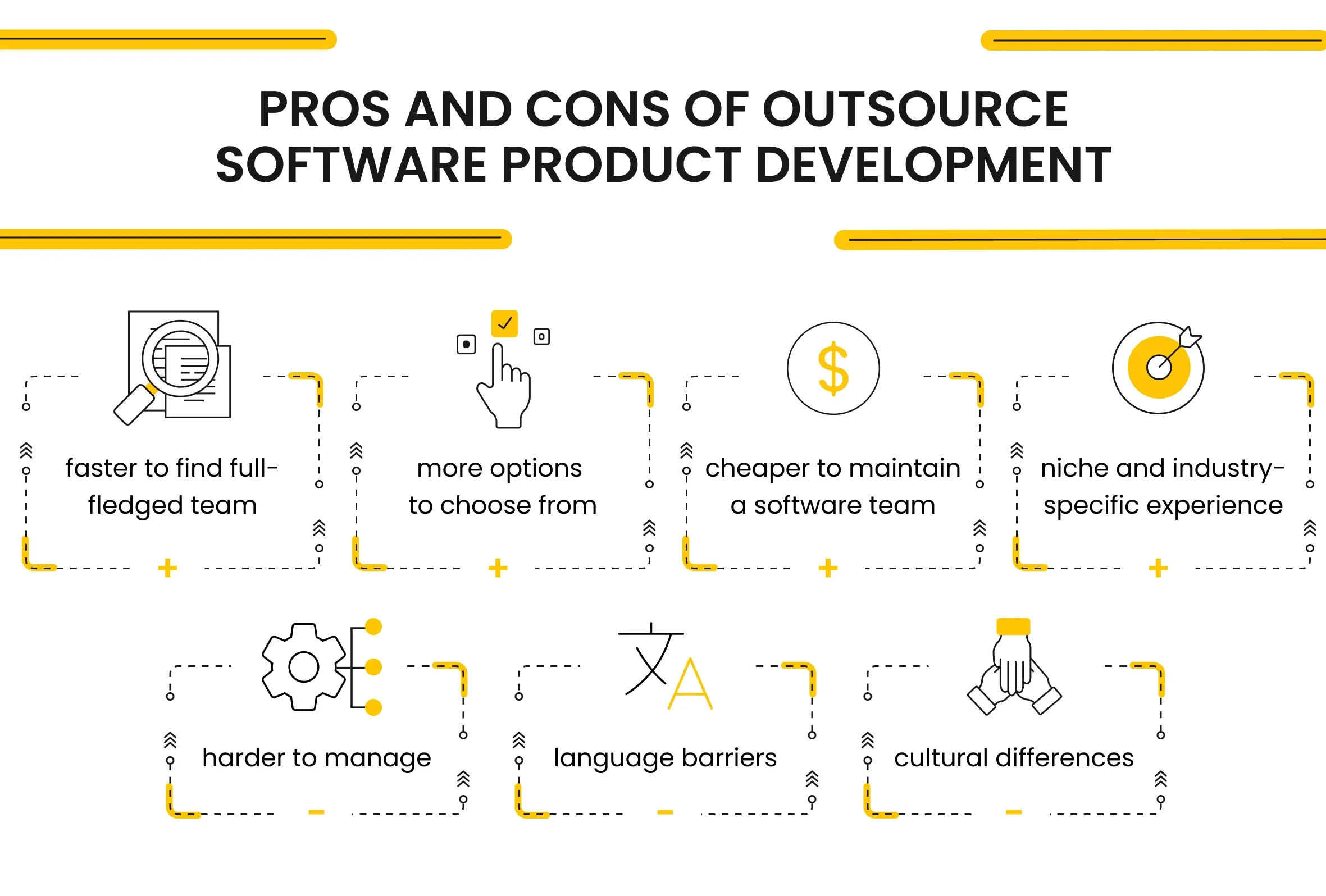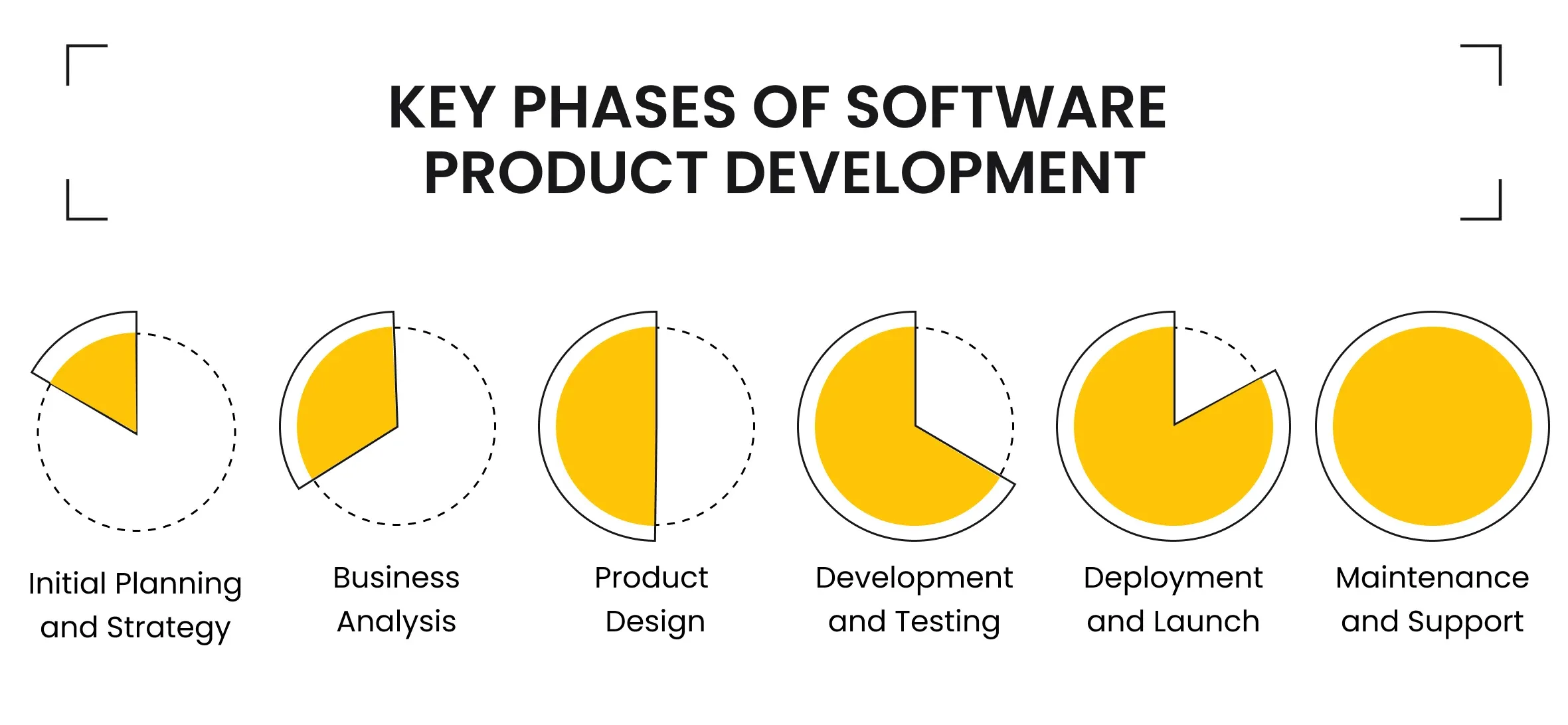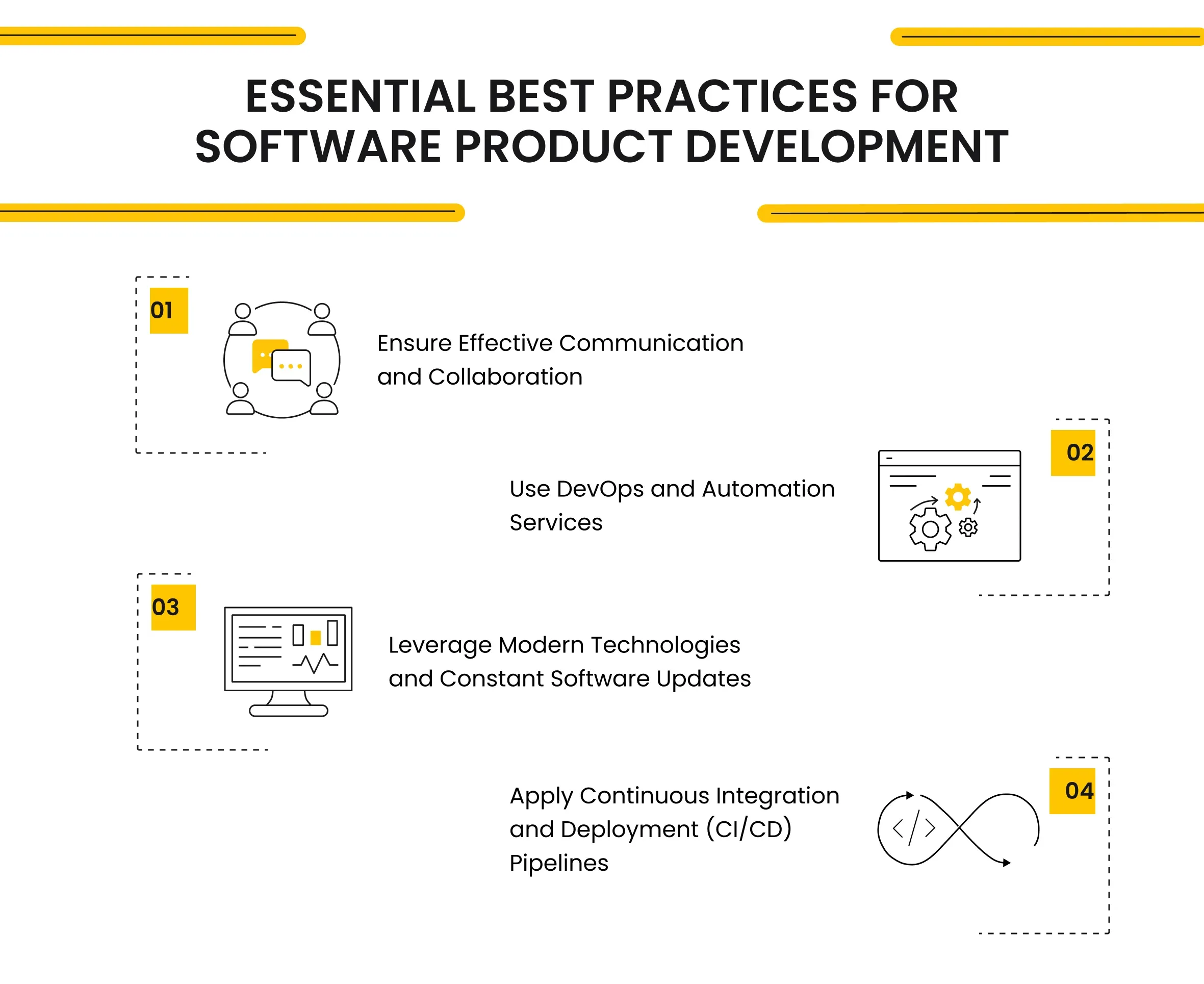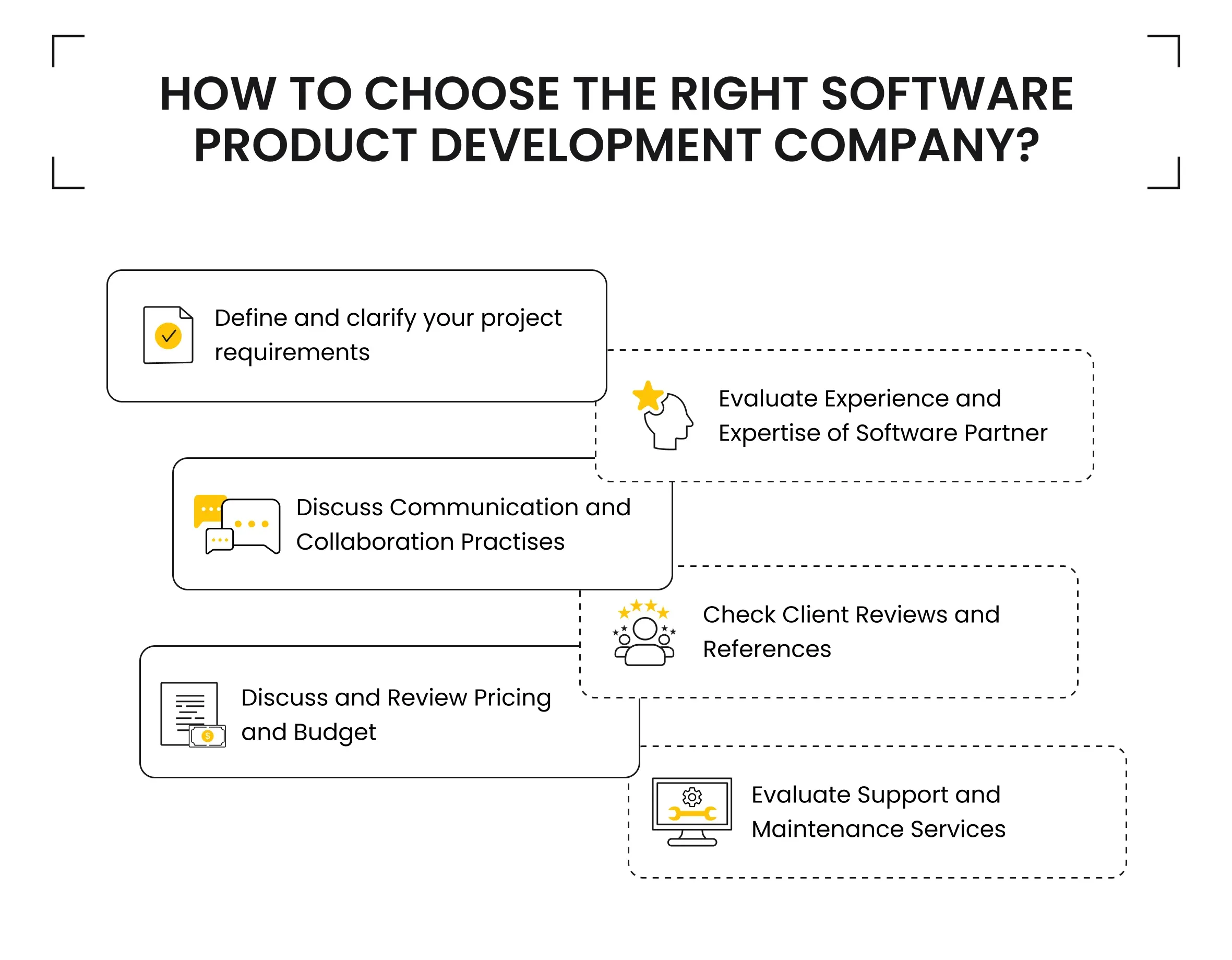Software Product Development: A Comprehensive Guide
August 02, 2024 • 249 Views • 22 min read
Tetiana Stoyko
CTO & Co-Founder
Software product development on demand is one of the most crucial services in the modern IT industry. Many outsourcing development teams propose software product development as their primary service.
To simplify, various IT outsourcing vendors perform custom software product development for businesses that need to update existing projects or design and develop an app from scratch.
First, we must learn the basics to understand software product development, how it happens, and its best practices.
What is Software Product Development?
Software product development is the process of creating or upgrading existing software solutions. These can be standalone desktop or mobile applications, various management systems like CRMs, custom software development tools, and other related solutions.
Software and product development can take place in countless variations. Still, there are two most popular and general approaches:
- In-house software development occurs when a business owner seeks a software solution, gathers its software development team, and maintains end-to-end development.
- Outsource product development when a company that requires software solutions hires a full-fledged development team on demand and delegates the whole software product development process to the hired specialists.
Both approaches are legit and have pros and cons, which are worth considering before proceeding to the subsequent phases of the software product development lifecycle.
Let’s briefly examine the most valuable advantages and challenges of each software product development team structure and cooperation.
Pros and Cons of In-House Software Product Development Teams

The most crucial advantage of such a development approach is direct access to your software team.
As a result, a business owner has total control over the software product development lifecycle and is informed about all recent updates and changes.
Besides, tracking the development progress and implementing urgent software product development strategy changes if needed is easier.
Apart from that, securing the development under such terms is simpler: security measures and policies can be set up from the beginning, and it is easier to maintain best security practices.
However, gathering a full-fledged in-house team is a challenging task that requires more resources, time, and effort:
- There is a limited number of niche-experienced developers in the local region.
- The salaries in your region might be much higher compared to popular outsourcing destinations like Eastern Europe or Asia.
- High competition among employers demands spending more money and other resources to hire a desired candidate.
Pros and Cons of Outsource Software Product Development

The outsourced software product development team covers the aforementioned challenges by accessing the global market of such services.
For instance, each business owner can find and hire a dedicated software team in almost no time. Besides, the services of outsourced developers are commonly cheaper due to the difference in regional salaries.
Moreover, it is noticeably simpler to find a full-fledged team with proven expertise: these are mostly offered as a service by various IT companies like Incora.
Still, setting up a satisfactory development environment will require some practice and effort. Don’t forget that outsourced software and product development is commonly offshore, which results in many challenges, starting with time zone differences and ending with cultural distinctions or language barriers.
Nevertheless, if you find reliable IT partners, they will cover these drawbacks and help you to create an efficient and comfortable product development plan.
Either way, the key phases of the software product development process are the same for each development team approach. Let’s consider them as well for better clarity.
Key Phases of Software Product Development

Frankly, the list of product development stages can vary. Still, 6 must-have phases are included in any software project:
- Initial planning and strategy design
- Business analysis
- Product design
- Development and testing
- Deployment and launch
- Maintenance and support
Initial Planning and Strategy
The first step in any software and product development is discovering and researching everything related to the future project.
At this point, you want to gather as much information about your target audience, its demands and expectations, study your competitors' cases, etc.
After gathering this information, you can start planning your product, choosing the most essential features, and designing your software product development strategy.
One of the most common modern practices among software development projects is starting with a Minimum Viable Product (MVP). This approach narrows the functional requirements to new products and prioritizes only must-have features.
As a result, development takes less time and resources, helping to launch the software product as soon as possible. Besides saving resources, it helps speed up monetizing the software app and gathering user feedback.
By delivering the basic version of software products, businesses can gather users’ feedback faster and start improving and scaling their applications to satisfy users.
Business Analysis
Many business owners underestimate the role of business analyst in software development.
In a nutshell, a business analyst works as an intermediary between the development team and stakeholders. Apart from gathering software requirements and specifications and writing corresponding documentation, these specialists also ensure that both sides (developers and stakeholders) understand each other.
To simplify, BA learns the business logic and requirements and explains them to the development team. They also discuss the desired functionality with software engineers and the possibility of implementing it.
Eventually, BA specialists will participate in software product design creation and research the business aspects of the company.
Product Design
This product development stage precedes the actual development. Clearly, before creating anything, you have to visualize your final product and how it will look. We are not talking about the UI/UX elements. Instead, this software product design means planning the IT infrastructure and answering many questions like:
How will your application behave in certain circumstances? How will it gather, process, and operate data? What third-party software will you need for successful work?
In other words, software product design is more of a blueprint that visualizes the internal processes and helps to understand how it must work under the hood than how the user will see it. Still, this stage can also include the UI/UX design sketching so that the software team understands the demands of front-end software product development.
Development and Testing
Software product development itself happens according to the defined plan and requirements. The variety of possible ways of developing a software product is rich:
It can be based on the waterfall methodology when the development process is strictly planned and sequential, so each next phase occurs only after the previous one is developed. It helps maintain order and makes it easier to track and predict each next step. Also, it is an excellent solution for projects with limited budgets.
Alternatively, you can consider an agile software product development approach if you need flexibility. This model assumes that developers will work simultaneously on a few phases. Thus, such software product development requires more collaboration and communication within the team and demands more management skills.
One of the main advantages of agile software development is the possibility to switch tasks and adjust to new demands or requirements. For example, if you face the urgency of developing and implementing a new feature or fixing an error, your team can do it immediately. Still, this makes agile development less predictable and manageable.
There are other ways of developing a software product; however, their differences are not as significant. The rest of full-cycle development is primarily typical and shared by almost all development practices.
Deployment and Launch
Many software product development best practices have become must-have aspects of any project.
For instance, you can always code right in your main branch. However, software product development best practices assume writing code in various development tools, verifying new code units, and then merging and deploying new code inputs in the main branch of an app.
Therefore, if new code inputs include mistakes, errors or can cause conflicts - it would be much harder to fix them in the branch.
As a result, software development, deployment, and delivery are commonly divided into different product development steps.
Obviously, during the software product deployment and launch stage, app developers cover and test all processes related to launching the product.
Maintenance and Support
Eventually, after going live, the software product also requires maintenance and support services.
During this software product development phase, your hired specialists keep improving the software product, resolving the issues, optimizing the app performance, looking for ways to enhance the product quality, etc.
This stage can be explained as active QA testing: the team can see all the aspects of the software and how the app behaves and gather users’ feedback. Frankly, many elements tested during the development can look completely different after the actual release of an app.
Essential Best Practices for Successful Software Product Development
Software product development team structure can also be optimized using certain popular practices and techniques.

Effective Communication and Collaboration
It is worth remembering about the internal team communication and collaboration. It is the first and most essential practice for any successful software product development.
Frankly, efficient and clear communication in software product development teams is one of the most significant factors that directly impact the success and efficiency of your ongoing product development.
Therefore, ensure that every team member understands the main goals and tasks, knows their responsibilities, and whom to contact in different scenarios.
Additionally, create guidebooks and other supplemental documentation, which can be helpful during development. Finally, create a roadmap and schedule daily standups so that everyone can discuss development progress and the challenges they faced during it.
DevOps and Automation
DevOps (Development and Operations) has become a real deal-breaker for many modern software projects.
These specialists offer automation options for their clients during development. By automating repetitive and routine tasks, such services help cut expenses and save other resources.
For instance, streamlined code integration and deployment allow delegating employees to other, more difficult or complex tasks instead of performing repetitive work. Besides, don’t forget about the human factor, which is eliminated by process automation.
Continuous Integration and Continuous Deployment (CI/CD)
CI CD software development is one of DevOps specialists' most common automation options.
In a nutshell, CI/CD pipelines automate almost all processes related to code integration, testing, delivery, and deployment:
- CI stands for continuous integration when code is automatically tested. Thus, the system can identify potential issues or bugs and report them, so developers can fix the code faster and avoid bug hunting in the main branch. Moreover, the CI pipeline can partly validate code and check if new inputs won’t cause a conflict.
- CD can be explained as continuous delivery and/or deployment. Continuous delivery is the automated process of checking if all supplemental materials are included in the package so that the application has all the required resources to perform new tasks. Continuous deployment allows cutting the human intervention, offering automation of the rest processes related to code deployment.
To sum up, integrating CI/CD pipelines in custom software product development automates the process of code testing, validation, delivery, and deployment. Thus, app developers can prioritize coding itself, spending more effort and resources to ensure code quality.
Leveraging Modern Technologies
Finally, don’t underestimate the role of modern and innovative technologies.
To cut a long story short, we are not only talking about adopting the newest AI, blockchain, or buzzword technology. We totally recommend considering such integrations and planning them for the future.
Yet, keeping up-to-date software versions is even more critical in the context of modern technologies. This helps ensure high-performance results and supports software security.
How to Choose the Right Software Product Development Company?
Regardless of your preferences for software product development — whether you want an in-house or outsourced team, a waterfall or agile development approach, or DevOps with or without it — the most important step is finding a reliable development team for the required task.

To simplify it, we created a short list of aspects to consider while researching IT vendors.
1. Define Your Requirements
The first and most certain thing is to define your expectations.
Apart from setting a strategic task like “developing an app” or “creating a new feature,” you must describe it in as much detail as possible.
For example, instead of saying, “I want a mobile app that shows great performance!” try to specify what exact mobile app you want and what “great performance” is:
“I need a native iOS application that shows 90%+ productivity in certain testing tools”.
The more details you provide, the more accurate the estimation will be, and your IT partner will understand the exact tasks. This will save time for both of you and help avoid possible misunderstandings.
2. Evaluate Expertise and Experience
When you know what software product development services you are looking for - you can start monitoring specified B2B platforms like Clutch or GoodFirms. These services gather all required information about software development companies and display it in a user-friendly format.
For instance, you can find approximate project budgets, client feedback, niches and industries where contractors worked, case studies, etc. All this data helps to evaluate potential partners' experience and expertise. Moreover, there you can find links to the company’s website for additional research.
3. Consider Communication and Collaboration
After you have a list of potential offers, you can contact the contractors directly and discuss various aspects of future projects.
Once again, don’t forget about communication and collaboration with your partner: discuss how your communication will look in terms of custom software product development.
4. Check Client Reviews and References
Also, don’t underestimate the reviews and references of previous clients. They can be found on the aforementioned B2B platforms, the software company's personal website, its social media pages, and case studies.
You can also contact its previous customers for more detailed reviews or feedback.
5. Review Pricing and Budget Considerations
After narrowing down the list, consider your budget and the offered prices for software product development services.
Usually, before signing the agreements, such companies typically perform raw project estimation to understand better how much time and resources are needed for developing a software product.
6. Evaluate Support and Maintenance Services
Finally, ask about the support and maintenance services. Not all companies offer such services.
For example, here at Incora, we highly value our clients' success. To ensure that the project is successful, we usually include a few months of support and maintenance in software product development services. Yet, we can’t assure you that each software and product development company will do the same.
Therefore, discuss it in advance. If you are satisfied with the answers to the previous questions - you can sign the agreements and start your software product development project.
What’s your impression after reading this?
Love it!
1
Valuable
1
Exciting
1
Unsatisfied
1
FAQ
Let us address your doubts and clarify key points from the article for better understanding.
What is product development in IT industry?
Product development in the IT industry involves the process of creating and bringing new software applications, platforms, or digital services to market. It typically includes stages such as ideation, market research, requirement analysis, design, coding, testing, deployment, and maintenance. The goal is to address specific user needs or solve problems through innovative and functional technological solutions. This process often involves collaboration among cross-functional teams, including developers, designers, product managers, and quality assurance professionals.
What is the difference between software development and software product development?
Software development refers to the overall process of designing, coding, testing, and maintaining software applications or systems. It can be for internal use, custom solutions, or specific projects.
Software product development, on the other hand, focuses on creating commercial software products intended for a wider market. It includes not only the technical aspects of development but also market research, user feedback, product management, and ongoing updates to meet the evolving needs of users and remain competitive in the market.
How long does it take to develop a software product?
The time to develop a software product varies widely based on complexity, scope, resources, and requirements. Simple applications may take a few months, while more complex products can take a year or more. Factors like feature set, team size, and development methodology also influence the timeline.
What are the common challenges in software product development?
Common challenges in software product development include:
- Requirement Changes: Adapting to evolving user needs and market demands.
- Technical Debt: Managing legacy code and balancing quick fixes with long-term improvements.
- Resource Constraints: Limited time, budget, and skilled personnel.
- Quality Assurance: Ensuring robust testing and bug-free releases.
- Integration Issues: Combining new software with existing systems.
- Security: Protecting against vulnerabilities and maintaining data privacy.
- Project Management: Coordinating teams and meeting deadlines.
How many steps are in the new-product development process?
The new-product development process typically includes seven steps:
- Idea Generation: Brainstorming and gathering innovative concepts.
- Idea Screening: Evaluating ideas to select the most promising ones.
- Concept Development and Testing: Refining ideas and testing them with potential users.
- Business Analysis: Assessing the market potential, costs, and profitability.
- Product Development: Designing and creating the product.
- Test Marketing: Introducing the product to a limited market to gather feedback.
- Commercialization: Launching the product to the broader market.
you may also like
Let’s talk!
This site uses cookies to improve your user experience. Read our Privacy Policy
Accept
Share this article